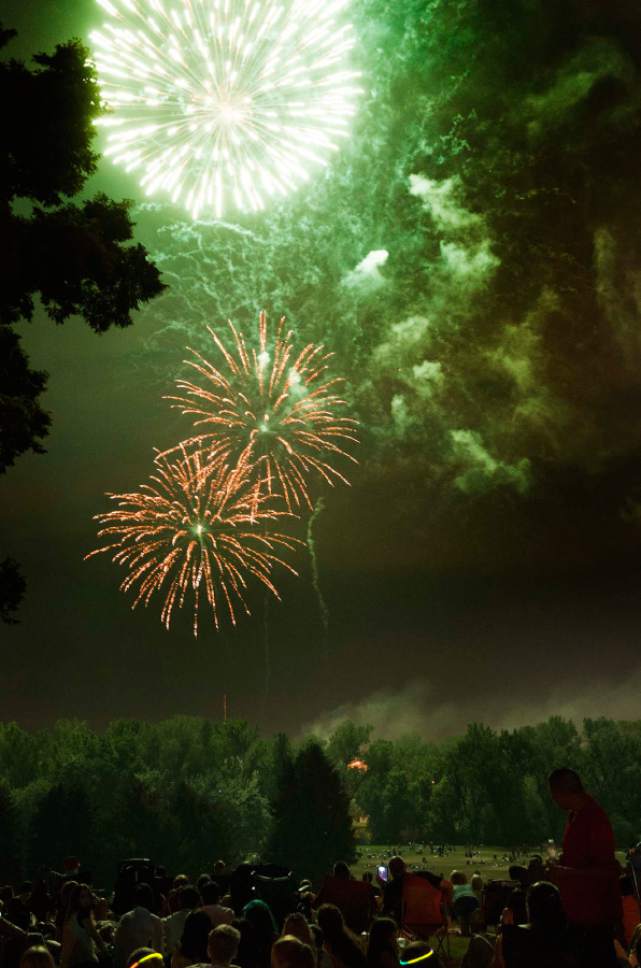This is an archived article that was published on sltrib.com in 2017, and information in the article may be outdated. It is provided only for personal research purposes and may not be reprinted.
As residents celebrated Independence Day on Tuesday, state air-quality monitors reported spikes in particulate pollution at several Wasatch Front locales.
Weber County was the hardest hit, with particulate matter soaring to 790 micrograms per cubic meter, nearly 20 times more than acceptable standards. Other counties registered high numbers as well — 128 micrograms per cubic meter in Utah County, 77 in Davis County, and 50 in Cache County.
Salt Lake City, which saw the highest spikes last year on the July Fourth, remained below 30 micrograms per cubic meter.
The Environmental Protection Agency's health standard for particulate pollution is 35 micrograms per cubic meter, though the standard calls for measurements to be averaged over a 24-hour period.
Consequently, most areas on the Wasatch Front continued to report "green" or "yellow" air quality, though repeated spikes of particulates on Wednesday caused the average in Davis County to inch toward "orange" air quality, on the color-coded index that indicates violations of the EPA's standard.
Weber County's spike was large enough to push the 24-hour average above the standard.
Were it not for the 24-hour average, the air quality index in Weber County would have registered "maroon" or "hazardous" air quality. If pollution at this level persisted for more than 24 hours, health officials could have declared emergency air conditions.
The high levels don't necessarily mean that Weber County residents set off more fireworks than other counties.
The pollution generated by fireworks is highly localized, Call said. The amount of firework smoke that registers on state monitors depends heavily on how close those fireworks are to the monitor's location, he said, as well as the direction of prevailing winds.
In the case of the Weber spike, Call said, "in that neighborhood where the monitor is, the folks are particularly festive and patriotic. I've been down there on the fourth before, and it's been almost foggy with all the fireworks."
While most of the fireworks-related particulates will dissipate quickly, Call said, high temperatures in the forecast are likely to cause another pollutant, ozone, to build up over Wasatch Front valleys.
Ozone is created in the atmosphere when sunlight causes other pollutants to react to one another, and so higher ozone levels are more likely on warm summer afternoons.
State officials recommend that residents with respiratory conditions or other sensitivities remain indoors in the afternoons when the forecast calls for elevated ozone levels.
Twitter: @EmaPen



